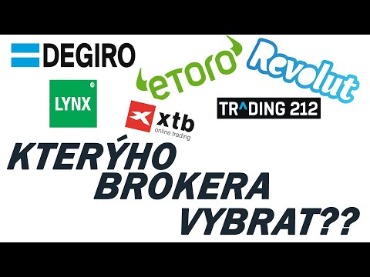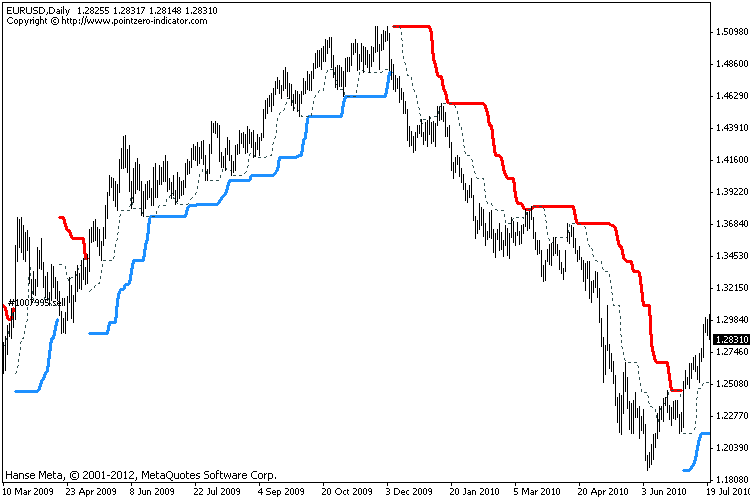Contents

A https://en.forexbrokerslist.site/ average is a great tool to use in conjunction with stochastics. It will act as a filter for your signals, as long as your trades are in the direction of the moving average. When the price is below the moving average, only look for shorts. If it’s above the moving average, only go for long trades.


An instrument won’t necessarily fall in price just because it is overbought. Similarly, it won’t automatically rise because it is oversold. Overbought and oversold merely mean the price is trading near the top or bottom of the range for the specified time period. Typically, traders look to place a buy trade when an instrument is oversold.
In fact, Lane used %D to generate buy or sell signals based on bullish and bearish divergences. The Slow Stochastic Oscillator smooths %K with a 3-day SMA, which is exactly what %D is in the Fast Stochastic Oscillator. Notice that %K in the Slow Stochastic Oscillator equals %D in the Fast Stochastic Oscillator .
Overbought readings were ignored because the bigger trend was up. Trading in the direction of the bigger trend improves the odds. The Full Stochastic Oscillator moved below 20 in early September and early November. Subsequent moves back above 20 signaled an upturn in prices and continuation of the bigger uptrend. In a trend-following strategy, traders will monitor the stochastic indicator to ensure that it stays crossed in one direction.
How to buy WestJet Stock? Step-by-Step Guide
He trades on a higher timeframe so are all his teachings. Rayner you are an Iumination to your generation and beyond. I have struggled to understand this stochastic concept for a while now. But today after reading and watching this material, am good.
- As with moving averages, when the two stochastic lines (%K and %D) cross, a signal is generated.
- And the last thing you’d want to do is “blindly” go short just because Stochastic is overbought.
- You can change these parameters in the “Style” tab of the indicator’s settings.
- A stop-loss is a vital part of trading, as the stochastic may fail like any other technical analysis tool.
- Im from philippines and big fan and a follower of you in investa and fb.
- This is an example of bearish divergence, which may signal an impending market reversal from an uptrend to a downtrend.
The stochastic broke below 80 , so a trader would expect a further price decline. The price was falling for two days , but the decline wasn’t significant. Moreover, it was challenging to identify a take-profit level as the closest support level was too far . Also, the stochastic didn’t reach the oversold area but soon returned to the overbought conditions. The stochastic in technical analysis is a momentum indicator, which means that it doesn’t reflect a trend like common trend tools, like moving averages.
What Does the Stochastic Oscillator Tell You?
The stochastic oscillator might show that the market is overbought, but the asset could remain in a strong uptrend if there is sustained buying pressure. This is often seen during market bubbles – periods of increased speculation that cause an asset’s price to reach consistently higher highs. This makes it easy to identify overbought and oversold signals. Regardless of how quickly the market price changes, or how the market volume fluctuates, the stochastic oscillator will always move in this range. The stochastic oscillator is a momentum indicator, which compares the most recent closing price relative to the previous trading range over a certain period of time. Unlike other oscillators, it does not follow price or volume, but the speed and momentum of the market.

You can use Bollinger bands to provide insight into the normal volatility of the asset. You can use other tools, which we’ll look at later in the article. Below, we will take a closer look at each of these so you can better understand how to leverage this powerful indicator in your trading. The indicator is conceptually easy to understand and is available on most charting packages. The sports car is fast and can change direction quickly when the price changes.
What Are the Disadvantages of the Stochastic Oscillator?
The IBM example above shows three 14-day ranges with the closing price at the end of the period line. The Stochastic Oscillator equals 91 when the close was at the top of the range, 15 when it was near the bottom and 57 when it was in the middle of the range. Rather than using readings above 80 as the demarcation line, they instead only interpret readings above 85 as indicating overbought conditions. On the bearish side, only readings of 15 and below are interpreted as signaling oversold conditions. Divergence occurs when the security price is making a new high or low that is not reflected on the Stochastic Oscillator.
Before looking at some chart examples, it is important to note that overbought readings are not necessarily bearish. Securities can become overbought and remain overbought during a strong uptrend. Closing levels that are consistently near the top of the range indicate sustained buying pressure. In a similar vein, oversold readings are not necessarily bullish. Securities can also become oversold and remain oversold during a strong downtrend. Closing levels consistently near the bottom of the range indicate sustained selling pressure.
https://forex-trend.net/ also contended that the most important signal is the divergence between %D and the contract. Divergence is the process where the Stochastic %D line makes a series of lower highs while the commodity makes a series of higher highs. An oversold market exhibits a series of lower lows while the %D makes a series of higher lows. When it comes to understanding the trending market, the Slow Stochastic Oscillator is a helpful component of any trading strategy.
Conversely, should a security trade near resistance with an overbought Stochastic Oscillator, look for a break below 80 to signal a downturn and resistance failure. If the stochastic indicator falls from above 80 to below 50, it indicates that the price is moving lower. If the indicator moves from below 20 to above 50, it signals the price is moving higher. A stochastic oscillator is used by technical analysts to gauge momentum based on an asset’s price history.
How to Use A Stochastic Oscillator
There are three versions of the Stochastic Oscillator available on SharpCharts. The Fast Stochastic Oscillator is based on George Lane’s original formulas for %K and %D. In this fast version of the oscillator, %K can appear rather choppy.
Thus, if we analyze the overbought and oversold levels of theEURUSD chart, we can spot a bearish trend. That’s why we look for a point to open a short trade in overbought zones. The stochastic oscillator presents a potential entry point where the red oval is. As there is a crossover of the indicator lines above 80%, a short-term correction should end, and the downtrend will continue pushing the oversold levels lower. A stop-loss is a vital part of trading, as the stochastic may fail like any other technical analysis tool.
The Stochastic signals
The overbought issue occurs within an uptrend when the main line crosses the 80% level in an upward direction. It’s a sign that the rise slows down, and the price trend reverses down. Generally, a sell position should be open when the line breaks the 80% level back from the top, where the last closing price is, and follows the downward direction. The Stochastic Oscillator is a very popular technical analysis tool, available on almost all trading platforms and used by many traders all over the world. Similarly, the Stochastic determines where the price closed in relation to a specific price range over a chosen time period. During an uptrend prices tend to close near the top of a specific range, whereas during a downtrend they cluster near the bottom.
https://topforexnews.org/ should not enter trades blindly based simply on OB/OS conditions alone. A deep understanding of the overall trend direction is required, and a system for filtering trades accordingly. You can confirm a bullish or bearish divergence with the support or resistance break. The red arrow at the bottom shows the bullish divergence in the image above as %K moves up while the price moves lower. The arrow at the top points to the confirmed break to the upside. In short, whenever an oscillator fails to reach a new high, in alignment with the current price action, this often indicates that the uptrend momentum is beginning to wane.
The stochastic indicator helps traders identify trade exit and entry points by applying the overbought/oversold strategy. A stochastic reading is above 80 indicates an overbought level. Readings below 20 signify oversold conditions in the market. Both are stochastic tools that are used to determine momentum in any given market condition.
